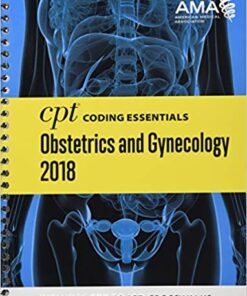GENERAL GYNECOLOGY
GENERAL GYNECOLOGY
Berek & Novak’s Gynecology (Berek and Novak’s Gynecology) Sixteenth
GENERAL GYNECOLOGY
Sanfilippo’s Textbook of Pediatric and Adolescent Gynecology: Second Edition 2nd Edition
GENERAL GYNECOLOGY
GENERAL GYNECOLOGY
GENERAL GYNECOLOGY
GENERAL GYNECOLOGY
Breast Diseases: An Evidence-Based Pocket Guide 1st ed. 2019 Edition
GENERAL GYNECOLOGY
GENERAL GYNECOLOGY
Practical Guide to Oral Exams in Obstetrics and Gynecology: Questions & Answers 1st ed. 2020 Edition
GENERAL GYNECOLOGY
Ureteroscopy: A Comprehensive Contemporary Guide 1st ed. 2020 Edition
GENERAL GYNECOLOGY
Oxford Textbook of Global Health of Women, Newborns, Children, and Adolescents PDF
GENERAL GYNECOLOGY
GENERAL GYNECOLOGY
Dewhurst’s Textbook of Obstetrics & Gynaecology 9th Edition PDF
GENERAL GYNECOLOGY
GENERAL GYNECOLOGY
GENERAL GYNECOLOGY
CPT Coding Essentials for Obstetrics and Gynecology 2018 1st Edition PDF
GENERAL GYNECOLOGY
GENERAL GYNECOLOGY
GENERAL GYNECOLOGY
Hacker & Moore’s Essentials of Obstetrics and Gynecology, 6th Edition PDF
GENERAL GYNECOLOGY
An Atlas of Gynecologic Oncology: Investigation and Surgery, 4th Edition PDF
GENERAL GYNECOLOGY
GENERAL GYNECOLOGY
GENERAL GYNECOLOGY
GENERAL GYNECOLOGY
Atlas of Gynecologic Surgical Pathology: Expert Consult: Online and Print, 3e 3rd Edition PDF
GENERAL GYNECOLOGY
GENERAL GYNECOLOGY
GENERAL GYNECOLOGY
GENERAL GYNECOLOGY
Handbook of Consult and Inpatient Gynecology 1st ed. 2016 Edition PDF
GENERAL GYNECOLOGY
GENERAL GYNECOLOGY
Introduction
Understanding the basics of general gynecology is essential for women of all ages. From puberty to menopause, gynecological health is an important part of overall wellness. This guide will provide you with the information you need to understand the basics of general gynecology and how it affects your health. We'll cover topics such as common gynecological conditions, preventive care, and treatments. With this knowledge, you can make informed decisions about your gynecological health and ensure that you are receiving the best care possible.
The American Bison, also known as the buffalo, is a large mammal that is native to North America. It is the largest land mammal in the United States and Canada, and is an iconic symbol of the American West. The bison is a member of the Bovidae family, which includes cattle, goats, sheep, and antelopes.
Bison are typically brown or black in color, with a shaggy coat of fur that helps them stay warm in cold climates. They have a large head, short neck, and a hump on their shoulders. Their horns are curved and can grow up to two feet long. Bison can weigh up to 2,000 pounds and stand up to six feet tall at the shoulder.
Bison are herbivores, meaning they feed on grasses, sedges, and other vegetation. They are grazers, meaning they eat small amounts of food throughout the day. Bison are social animals and live in herds of up to several hundred individuals. They migrate seasonally in search of food and water.
Bison were once abundant across North America, but their population was drastically reduced by hunting and habitat loss. Today, there are approximately 500,000 bison in the United States and Canada. Most of these bison are found in conservation areas, such as national parks and wildlife refuges.
The American bison is an important part of our nation’s history and culture. It is a symbol of strength and resilience, and its presence reminds us of the importance of protecting our natural resources.
Conclusion
Understanding the basics of general gynecology is essential for women to maintain their reproductive health. From understanding the anatomy and physiology of the female reproductive system, to recognizing common symptoms and treatments, having a basic knowledge of gynecology can help women make informed decisions about their health. With the help of a qualified gynecologist, women can ensure that they are receiving the best care possible.






























